Horizontal, vertical and oblique lines in the history of photography.
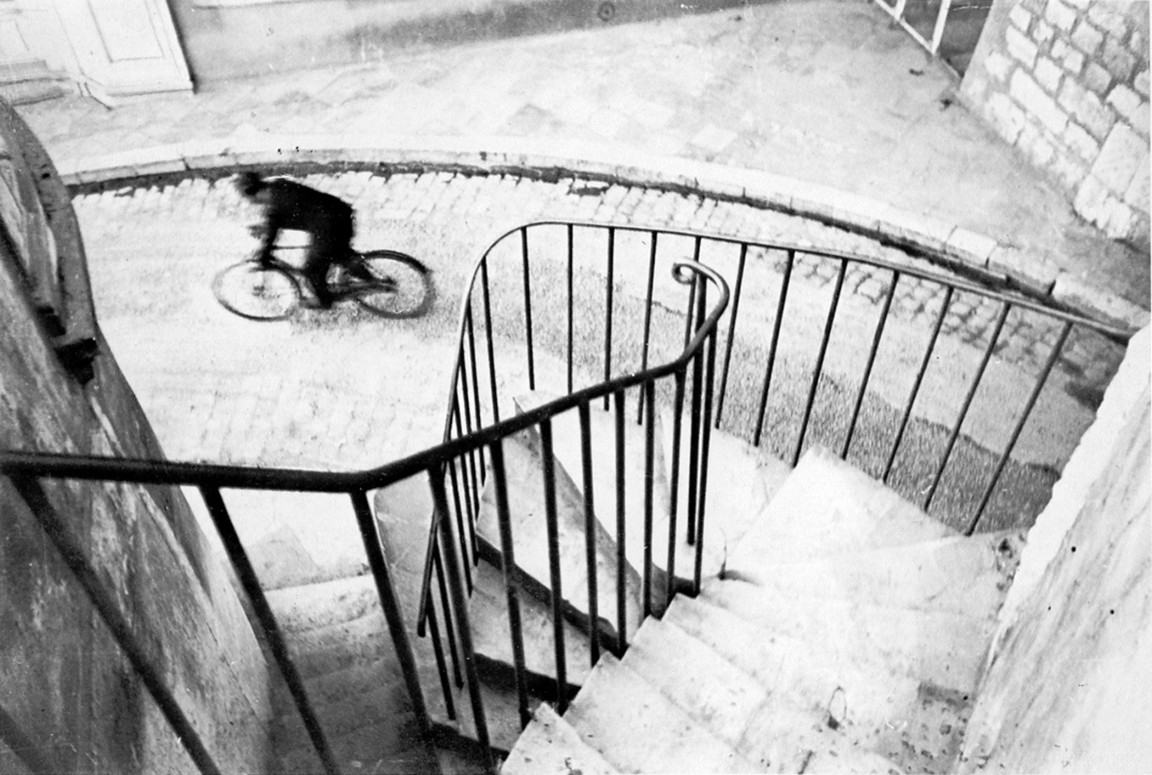
The rule of thirds and the golden section are "proportional" rules which are mainly applied in photographic formats (I mean films/sensors) of today and they are not the only existing systems: there are in fact the so-called axial systems , widely used in the past by photographers well known and chosen as they are more suited to the type of film in use. For broad lines, the axial compositional rules are based on the "main" lines of the various photographic formats or the lines that cut the scene in two: horizontal, vertical, diagonal left and diagonal right. Of course, a combination of the 4 mentioned lines can also be used. It goes without saying that the rule of thirds is in turn axial and is the classic "subdivision" used in the 24×36 format.
Henri Cartier Bresson, for example, often used the rule of thirds in his works.
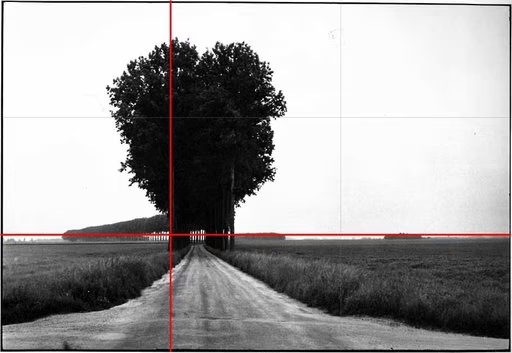 Henri Cartier-Bresson
Henri Cartier-Bresson
Note how all the details in Bresson's photos are treated in an almost maniacal way: the horizon is on the first third of the photo just as the two rows of trees both lean against the same line. the tree rests on the vertical dividing line between the first and second thirds. Furthermore, at the intersection between the two lines, the visible road ends and the row on the left begins, while the trunk ends a little further up and the crown of the tree in the foreground begins. But did you notice that the sky is overexposed?! Probably not right away because the rest of the scene caught your attention. Bresson, in this photo, has also used a very particular line (the one on the left) by loading the prominent elements of the photo on it. This subdivision (because of the aspect ratio with 24×36 film) is called a 2:3 subdivision.
We find a similar situation in the following photo, again by Bresson:
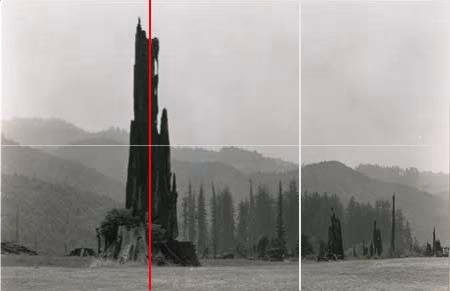 Henri Cartier-Bresson
Henri Cartier-Bresson
The main element of photography develops on the dividing line between the first and second third.
Salgado also used the rule of thirds in his compositions, even if he went "beyond" by employing other axes in the composition of the photographed images.
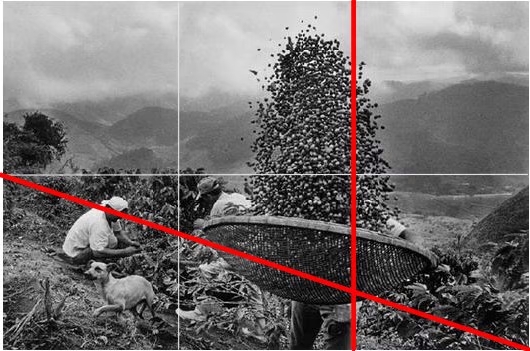 Sebastiao Salgado
Sebastiao Salgado
In the photograph above, the lower third has been occupied and it is noted that in addition to having developed the photo in height, he has made sure that the main elements (the basket and the crouched person, as well as the plants on the right) fall on the diagonal line of the lowest third.
In addition to the rule of thirds, of fundamental importance, at least in historical photography, is and has been the axis of mirror symmetry , both horizontally and vertically. As can be guessed from the name, the aim of this technique is to ensure that the photograph "repeats" mirror-like in the two halves of the photograph.
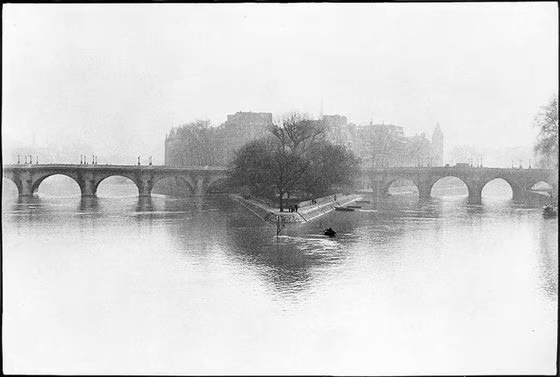 Henri Cartier-Bresson
Henri Cartier-Bresson
Again Bresson offers us an example of this type of photography: the image above can be divided in half along the central vertical. The image represents the city of Ile even if the city itself is the last thing that attracts attention: the two bridges over the Seine are the masters, placed on the median axis of the photo. The tree, a dividing element of the bridges, is arranged on the median vertical axis and "intersects" the roadway of the bridges right in the center of the photograph. Bresson, to give greater prominence to these objects, also decided to take the photo with a strong haze (Ile is not very visible) as well as he used a film with a high graininess which further made the background of the photo "not very visible".
We find a similar symmetry in the photo of another sacred monster of photography, Ansel Adams .
 Ansel Adams
Ansel Adams
The panorama is almost perfectly mirrored between left and right: not only the mountains but also the reflections in the water and the shadows have been studied. In addition, this photograph has the second separation axis (the horizontal one) positioned on the separation line at 1/3 while in the lower part there is an element of "disturbance" (the shadow) which makes the final photograph less boring. Obviously the focal point of photography is precisely on the axis of the first third: on this axis Ansel Adams developed the second (and primary) specularity of the image. Above the mountains, below their reflection in the water.
Looking at the following photo, taken by Carleton E. Watkins, we observe another example of a mirror image: there is no water that reflects but very similar elements that are replicated in the photograph.
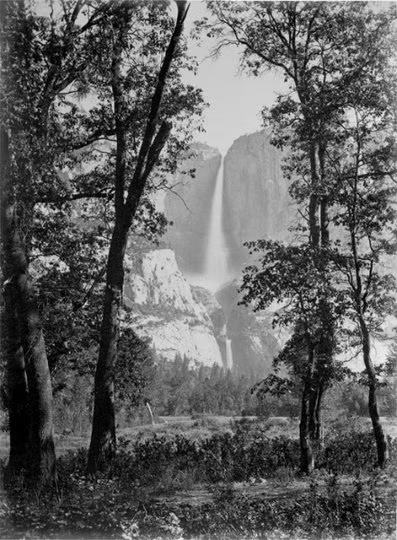 Carleton E. Watkins
Carleton E. Watkins
Watkins also introduces a concept that we will see better in one of the next articles, namely the "frame" (called fifth ) around the waterfall (the subject) formed by trees that are darker than the subject. The photo is specular with respect to the vertical axis and furthermore, due to the (voluntary) mist present near the waterfall, the same backdrop assumes a primary role in the image.
There are many examples of such photographs such as the two famous photos taken in New York by Andreas Feininger: in the first we have the classic case of a backdrop with the side buildings totally black and the Empire standing out against the background. In the second photo, however, the fifth is made by the tie rods of the bridge. Note how the same tie rods divide the photograph into many small areas and how, in addition to the vertical symmetry, the attention is catalysed (thanks to the lines, we'll look into this too, I promise) towards the center-bottom of the photograph, where the two people are .
Let's continue the roundup of symmetrical photos, analyzing another shot by Adams: in the following photo, the separating element is the trunk in the foreground while the symmetrical elements are the "light" trunks positioned immediately behind. The backdrop is dark to give maximum prominence to what is on the vertical.
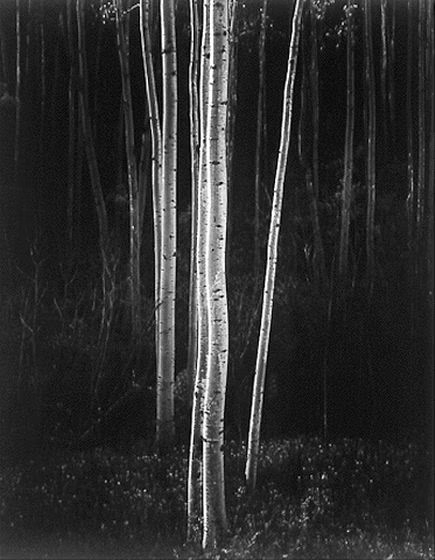 Ansel Adams
Ansel Adams
Ansel Adams has also shot, like Ernst Haas , applying the rule of " bands ": these are photographs where the landscape is divided into well-defined bands. Landscape not by chance: this type of photography, which ultimately applies perfectly to the rule of thirds, is mainly used in landscape photography.
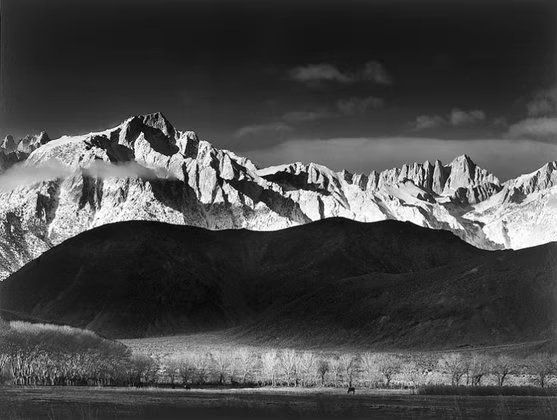 Ansel Adams
Ansel Adams
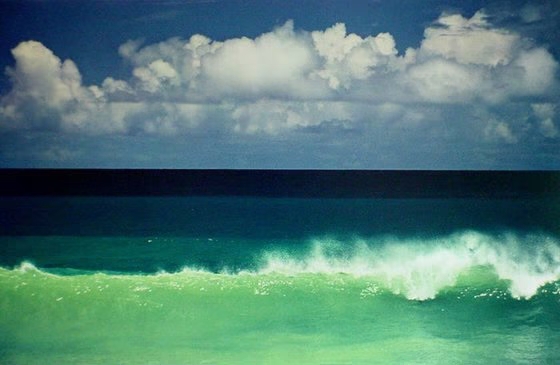 Ernst Haast
Ernst Haast
This technique is well expressed in the two photographs above: the photographs can be divided into several bands, each with its own chromatic characteristic. Chromatic difference that is exaggerated in Adams' photo: the latter can be divided into five “alternating” bands. Dark, Light, dark, light and dark again. Also note the small detail at the bottom: the silhouette of a horse that manages to attract the attention of the observer.
The chromatic differences are also present in the Haast bands: there are seven of which the second is irregular and composed of clouds. Finally, the lower band overflows into the previous one due to the breaking water. Detail that avoids making the photograph flat and static. Furthermore, the puff of water takes up the motif of the clouds, as if to make the scene symmetrical on the horizontal axis.
The bands are not only horizontal: Adams himself allows us to evaluate this effect vertically with the following scene:
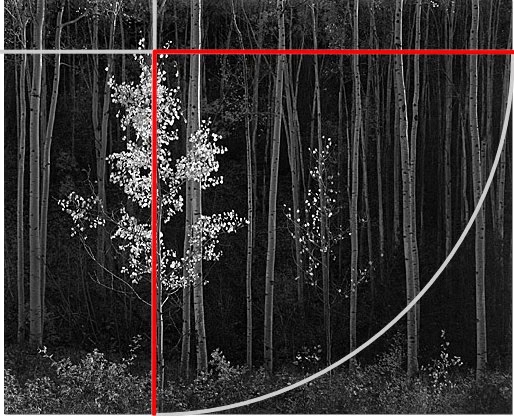 Ansel Adams
Ansel Adams
The vertical bands are created with trees. Note the plant in the foreground: it is the prominent element of the photograph, positioned in the first third. Furthermore, Adams succeeded in transforming the tree into the "ray" of a hypothetical circumference within which the fundamental elements of the scene are positioned. The small tree on the right or even the trunk even further to the right which begins to be visible starting from the circumference.
Finally, let's analyze some compositions based on oblique axes .
In all the above photographs, signed by Ansel Adams , Sebastiao Selgado , Bresson , Libshon and Hine , the fundamental lines are the obliques. The last two photographs are very similar and characterized by an ascending diagonal. In addition, Salgado placed a tree vertically in the first third. The contrast is also similar, even if opposite: light in the upper part of Salgado's photo, dark in that of Adams.
Also in the two immediately preceding photos signed by Adams, we find the Ascending diagonal in the photo of the forest (with the horizon aligned with the first third) and a descending diagonal in the photo of the trunk. Bresson also used the same diagonal in the portrait of a woman, focusing in particular on the latter's leg.
The photos by Hine and Libshon, on the other hand, make use of the descending diagonal. In particular, in the train photo, the descending diagonal provides a sense of movement to the train itself.
As mentioned initially, it is not uncommon to find compositions that are based on the use of several axes at the same time (and we have already seen examples in these photos): other examples are the "pyramid", "hourglass" or zigzag" composition .
 William Clift
William Clift
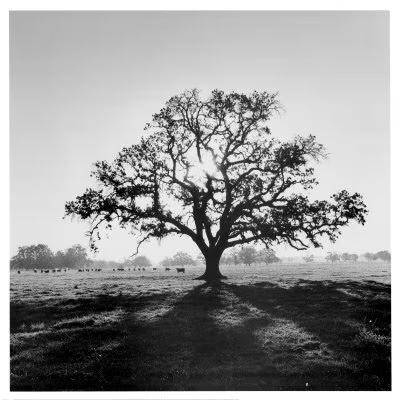 Ansel Adams
Ansel Adams
The two examples above signed by Clift and Adams are examples of the pyramid composition: the diagonal lines that originate along the vertical axis of symmetry are used. Both photographers managed to center the apex of the pyramid on one of the two horizontal axes (of the thirds): the higher one in the case of Adams, the lower one for Clift.
 Andreas Feininger
Andreas Feininger
An example of an hourglass composition by Freininger, even if not exactly perfect: looking at the luminous spaces to the left and right, one realizes that they tend to "get smaller" towards the center of the photograph, creating two triangles with a vertex in the centre.
To conclude this article, let's talk about the zigzag composition: in this case there is a mix of horizontal and diagonal lines. Two examples are those of Hoel Smith and the ubiquitous Adams:
 Ansel Adams
Ansel Adams
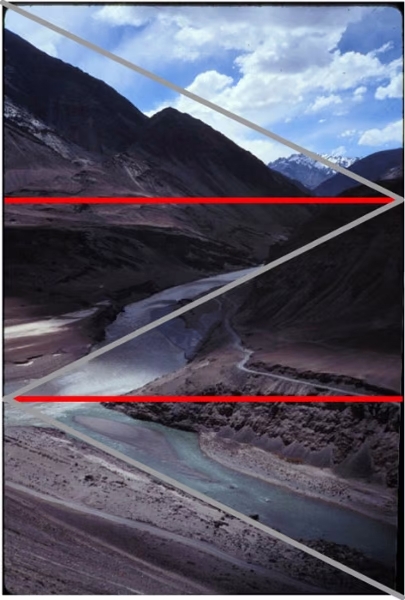 Joel Smith
Joel Smith
The diagonal (or in Adams' case the snake) gives a sense of movement to the photograph as well as guiding the human eye towards a specific point (in both cases the mountains in the background). However, we will often return to our composition articles and we will have the opportunity to see even more in detail the rule of thirds and the use of guidelines and the golden section.
When you subscribe to the blog, we will send you an e-mail when there are new updates on the site so you wouldn't miss them.
By accepting you will be accessing a service provided by a third-party external to https://www.insightadv.it/


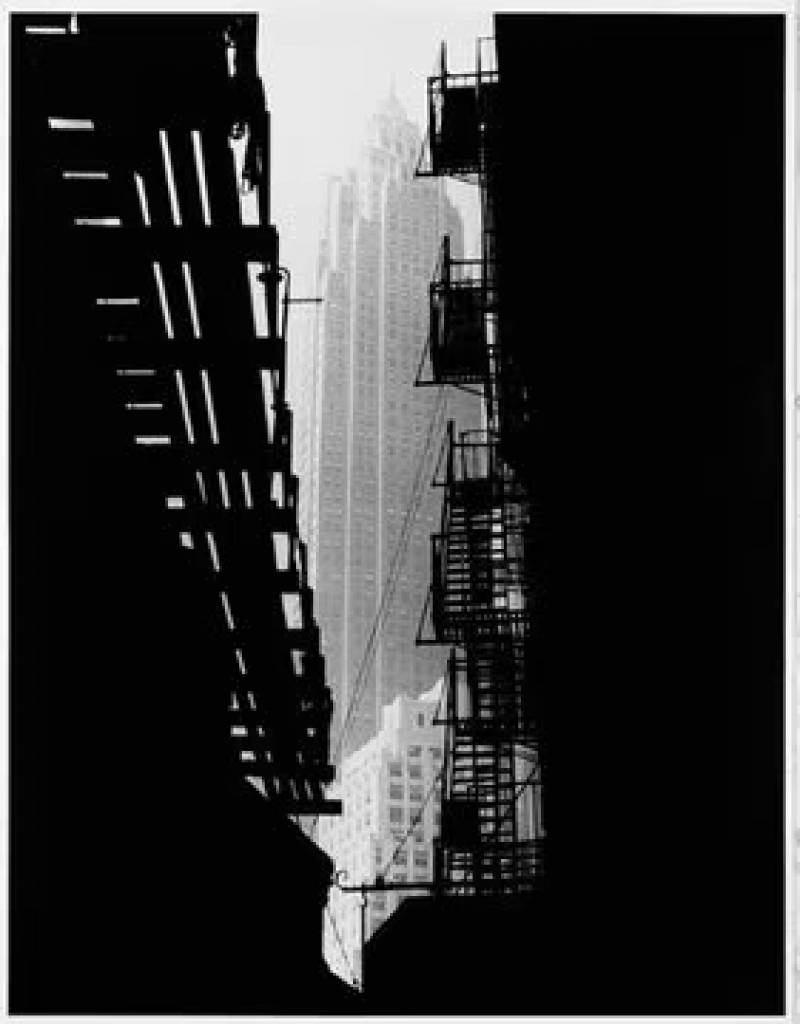

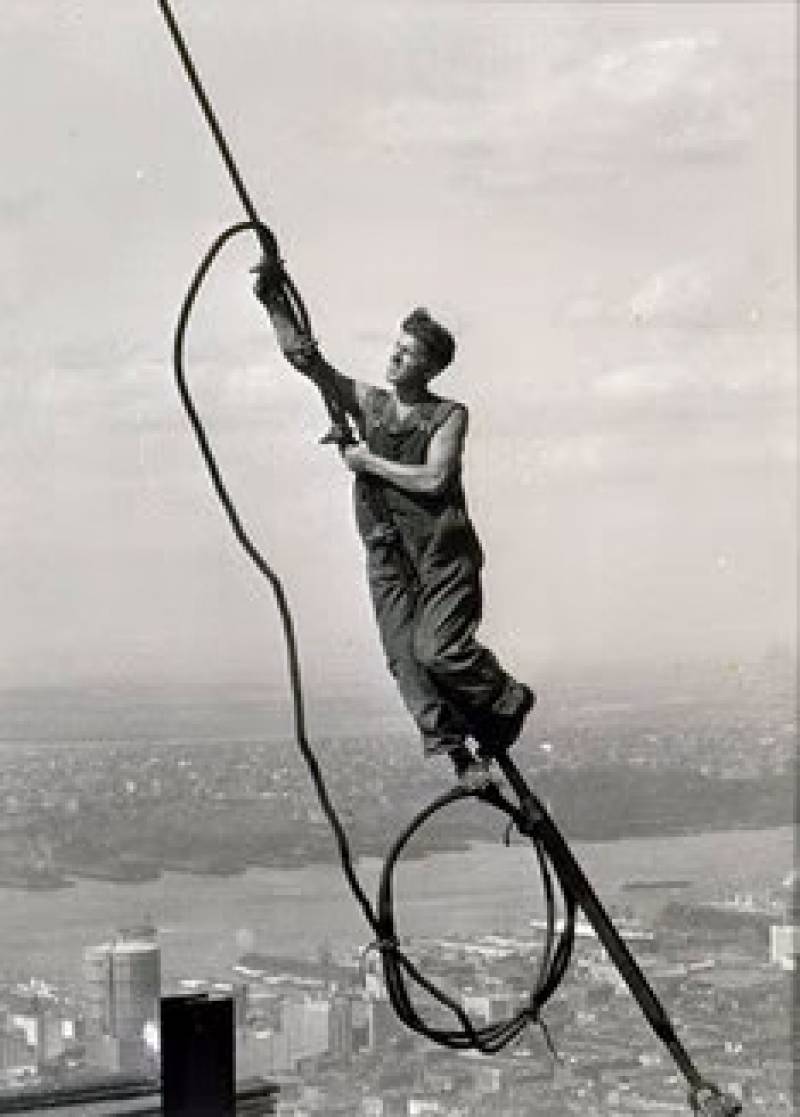

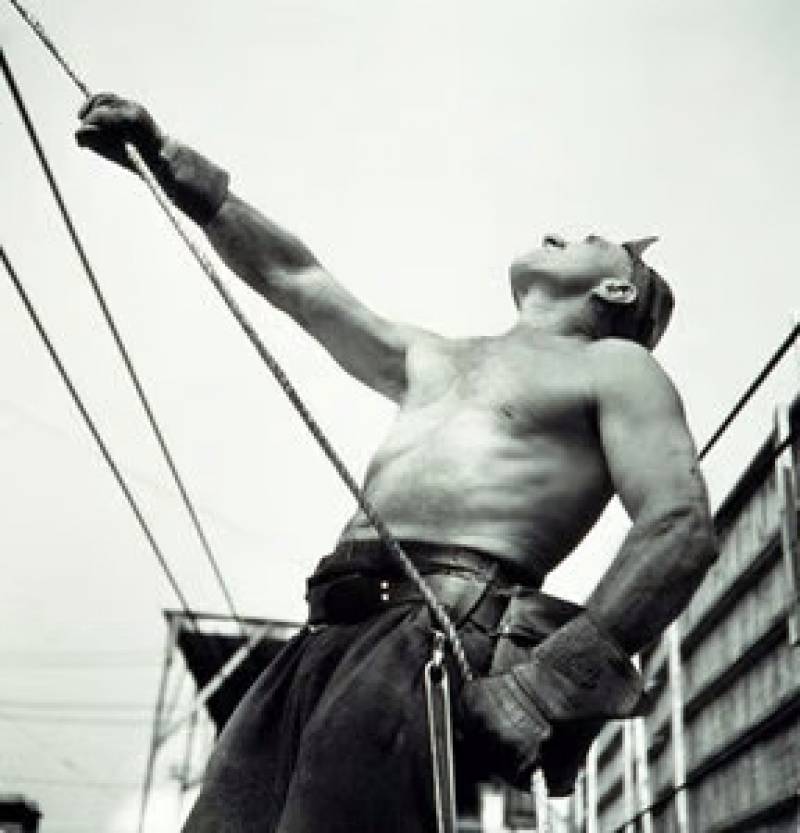

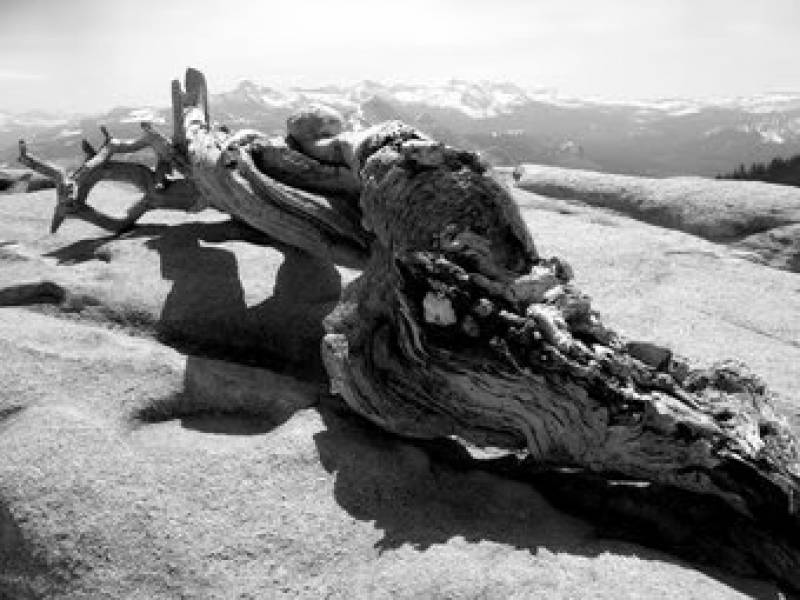
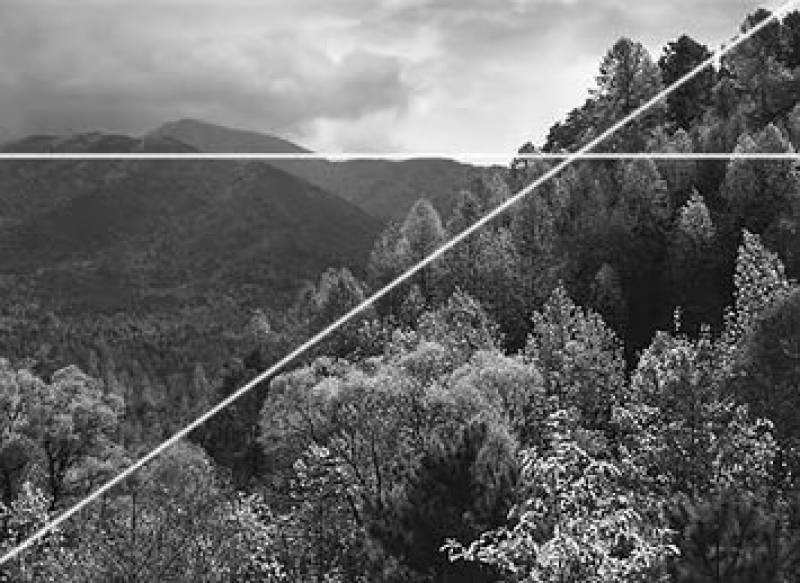
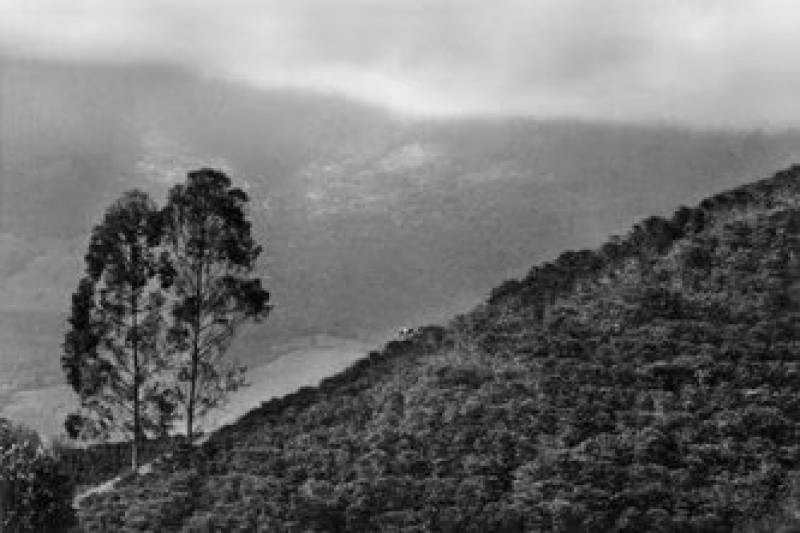
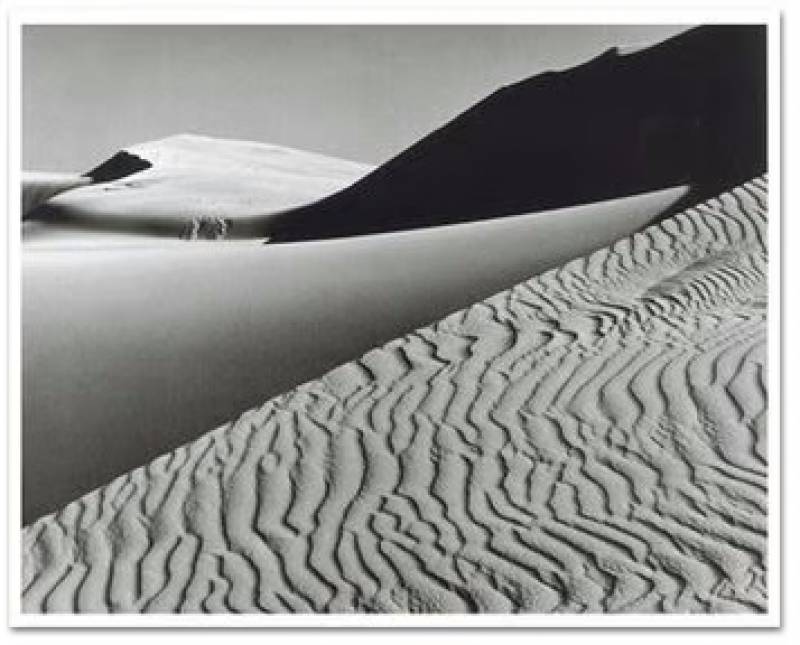
































































Comments